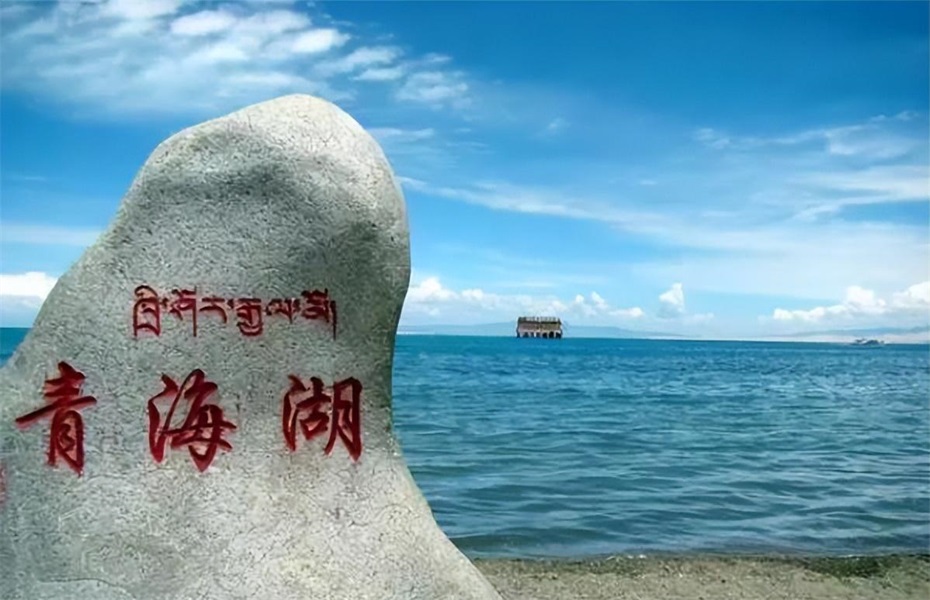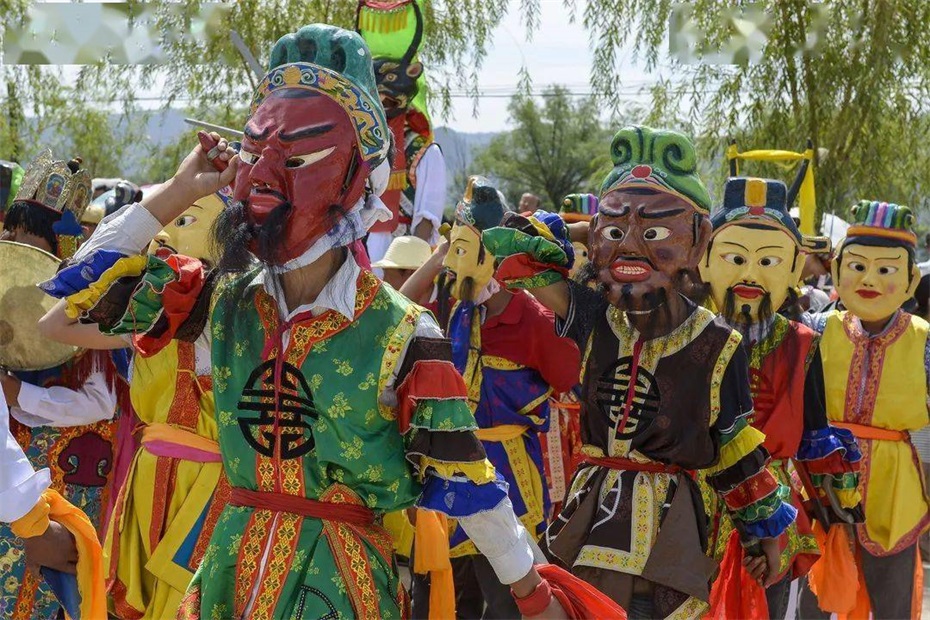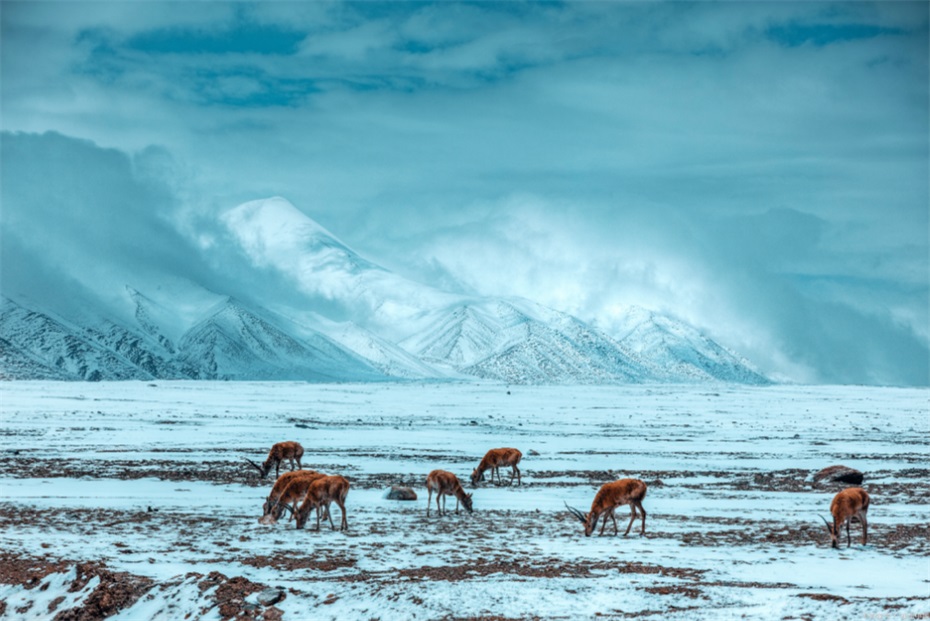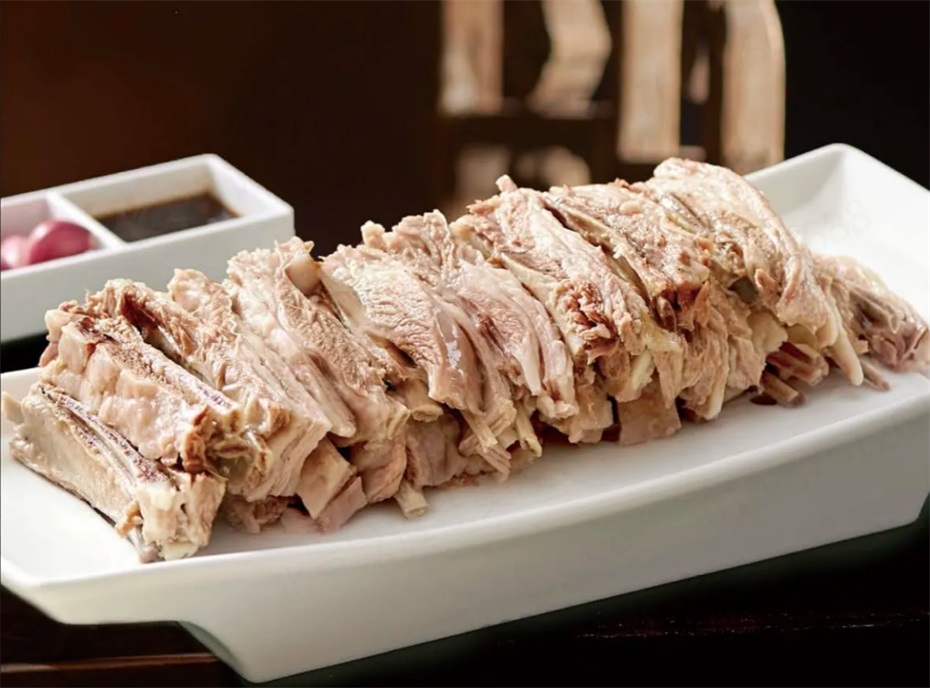Qinghai Province
Overview of Qinghai Province

Qinghai Province, abbreviated as "Qing", is located in western China and the northeast of the Qinghai Tibet Plateau. It is named after the largest inland saltwater lake in China, Qinghai Lake. The total area of the province is 722300 square kilometers, ranking fourth in the country, with 2 prefecture level cities and 6 autonomous prefectures under its jurisdiction, and a permanent population of 5.95 million people (2022 data). In 2022, the total regional GDP of the province will reach 361 billion yuan, making it an important ecological security barrier, strategic resource continuity area, and demonstration zone for ethnic unity and progress in China.
Qinghai Province currently governs two prefecture level cities, Xining (provincial capital) and Haidong, as well as six autonomous prefectures: Haibei Tibetan Autonomous Prefecture, Huangnan Tibetan Autonomous Prefecture, Hainan Tibetan Autonomous Prefecture, Guoluo Tibetan Autonomous Prefecture, Yushu Tibetan Autonomous Prefecture, and Haixi Mongolian Tibetan Autonomous Prefecture. As the "Water Tower of China" and the "Source of the Three Rivers", Qinghai is known as the "Key to the Tianhe River" and the "Chong of the Western Regions". It is also an important link between Xizang, Xinjiang and the mainland.
2Īó Geographical features
1. Location characteristics
Qinghai Province is located between 31 ĪŃ 36 Īõ -39 ĪŃ 19 Īõ north latitude and 89 ĪŃ 35 Īõ -103 ĪŃ 04 Īõ east longitude. It borders Gansu in the north and east, Xinjiang in the northwest, Xizang in the south and southwest, and Sichuan in the southeast. The province is located in the transitional zone between the Qinghai Tibet Plateau and the Loess Plateau, and is the source of the Yangtze River, Yellow River, and Lancang River, known as the "Water Tower of China".
2. Terrain and landforms
The average altitude in the province is over 3000 meters:
Northern region: Qilian Mountains
Central region: Qaidam Basin
Southern region: Qingnan Plateau (Sanjiangyuan area)
Eastern region: Hehuang Valley
Highest Peak: Bukadaban Peak (6860 meters above sea level)
3. Water system distribution
Source of the Yangtze River: Tuotuo River
Source of the Yellow River: Yueguzong Liequ
Lancang River Source: Zhaqu
Inland rivers: Heihe River, Shule River, etc
Lakes: Qinghai Lake, Zhaling Lake, Eling Lake
4. Climate characteristics
Belonging to plateau continental climate:
Annual average temperature: -5.6~8.6 Īµ
Annual precipitation: 15-750 millimeters
Significant features: sufficient sunshine, large temperature difference between day and night, thin air
3Īó Historical context
1. Origin of Civilization
Neolithic Age: Majiayao Culture (5000 years ago)
Bronze Age: Kayo Culture, Nomuhong Culture
Before the Han Dynasty: Qiang people's activity area
2. Organizational history
Han Dynasty: Established Xiping Pavilion (now Xining)
Tang Dynasty: The sphere of influence of the Tubo Dynasty
Yuan Dynasty: Formally included in the central government's territory
Qing Dynasty: Establishment of the Minister of Affairs in Xining
1928: Qinghai Province was officially established
3. Ethnic integration
Tibetan: a long-standing ethnic group
Han Chinese: Migration began during the Han Dynasty
Hui ethnic group: large-scale migration during the Yuan Dynasty
Mongolians: Entered Qinghai during the Ming Dynasty
Tu and Salar ethnic groups: distinctive ethnic minorities
4Īó Cultural Essence
1. Ethnic cultural characteristics
Tibetan culture: religious art, nomadic traditions
Islamic Culture: Hui and Salar Ethnic Customs
Tu Culture: Rainbow Tribe Folk Customs
Mongolian Culture: Nadam Festival
2. Intangible Cultural Heritage

Folk art: Regong art, Tu ethnic group plate embroidery
Traditional skills: Huangzhong pile embroidery, Tibetan carpet weaving
Folk Culture: June Meeting, Naton Festival
3. Dialect characteristics
Central Plains Mandarin: Hehuang Region
Tibetan: Three major dialect regions
Mongolian: Haixi Mongolian Region
Tu language and Salar language: characteristic ethnic languages
5Īó Tourist destinations
1. World Heritage Sites

Great Wall (Qinghai section)
2. National level scenic spots
Qinghai Lake
Kumbum Monastery Scenic Spot
Sanjiangyuan National Park
Chaka Salt Lake Scenic Area
Cambra National Geopark
3. Featured tourism
Ecological sightseeing tour: Qinghai Lake, Menyuan rapeseed flowers
Tibetan Buddhism Cultural Tour: Kumbum Monastery, Longwu Temple
Plateau exploration tour: Kekexili, Kunlun Mountains
Folk Experience Tour: Mutual Aid Tu Ethnic Customs Park
6Īó Food map
1. Qinghai's specialty cuisine

Yak jerky
Qinghai Old Yogurt
Dog urine (Youbing (Deep-fried round and flat dough-cake))
2. Featured snacks
Niangpi
sweet fermented grains
Miscellaneous soup
Kunguo Momo
Sheep intestine noodles
3. Specialty drinks
Qingke Wine
Black wolfberry
Cordyceps sinensis
Kunlun Snow Chrysanthemum
7Īó Development Status
1. Industrial system
Clean energy: photovoltaic and wind power industries
Ecological Livestock Industry: Organic Livestock Product Base
Featured Tourism Industry: Comprehensive Tourism Demonstration Zone
Salt Lake Chemical Industry: Potassium Fertilizer Production Base
2. Transportation network
Aviation: Xining Caojiabao International Airport
Railways: Qinghai Tibet Railway, Lanzhou Xinjiang High speed Railway
Highway: The mileage of expressways has exceeded 5000 kilometers
Rural roads: 100% connectivity rate in towns and villages
3. Ecological protection
National Park Demonstration Province Construction
Sanjiangyuan Ecological Protection Project
Ecological Restoration of Qilian Mountains
Clean Energy Demonstration Province
From the lakeside of Qinghai Lake to the source of the three rivers, from the Golden Summit of Kumbum Monastery to the wasteland of Hoh Xil, this pure land of "beautiful Qinghai" is writing a magnificent chapter in the development of Qinghai in the new era with the new Qinghai spirit of "climbing high and looking far, confident and open, united and dedicated, and unremitting struggle". Here, there is both the purity of the 'Mirror of the Sky' and the beauty of 'National Unity', which is becoming an important window to showcase the achievements of China's ecological civilization construction.
simliy
